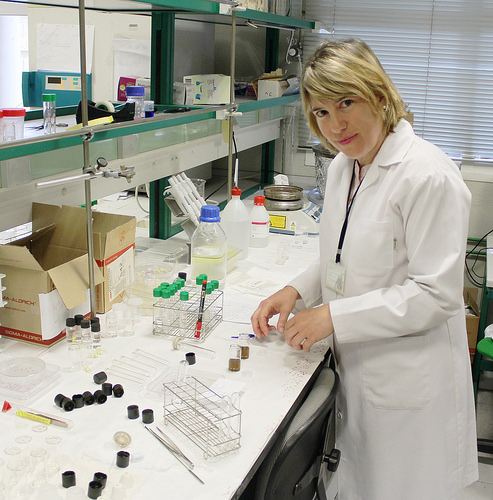Dr. Nuria O. Nuñez Alvarez, a researcher at cicCartuja attached to the Institute of Materials Science of Seville —in collaboration with experts from the Autonomous University of Nuevo León (UANL) and the Center for Applied Chemistry Research (CIQA) of Mexico— has obtained metallic silver nanoparticles in a chemical process where the extract of star anise seeds has been used as a reagent. This is the first time that a simple and low-cost method has been developed that combines the metallic compound with this spice.
The scientists have designed a method based on so-called “green chemistry” where, instead of using synthetic reagents, natural extracts are applied. In this case, the extract obtained from star anise seeds serves as a trigger for the reaction that gives rise to metallic silver nanoparticles.
According to the researchers, the current trend is the application of natural antioxidants from plant extracts as reducing and stabilizing agents in the chemical synthesis of metallic nanoparticles. “We have already achieved this with star anise and we have analysed the possibilities of other natural extracts, such as royal jelly or piquín chilli (native to Mexico), as reagents to obtain nanoparticles with properties applicable in medicine,” Nuria Núñez, a researcher at the Institute of Materials Science in Seville, explains to the Fundación Descubre.
So far, the new particles have been tested in vitro with fungi and various types of common bacteria, such as Salmonella and Staphylococcus aureus, which cause various infections. With all of them, the results are positive, since they counteract their harmful effects, as described in the article ‘Synthesis of Antibacterial Silver-based Nanodisks and Dendritic Structures Mediated by Royal Jelly’, published in the journal RSC Advance. “We obtain particles that have a high antibacterial activity, that is, with very low concentrations, efficient results are achieved,” she says.
Experts point out other advantages of nanostructures due to their small size, such as their use for optical applications in sensor technology, as they could be used to detect substances at a molecular level. “The particles we obtain have good dimensions and optical properties for this purpose,” says Núñez.
Sustainable process
Obtaining nanoparticles is possible through a sustainable process that combines chemistry with respect for the environment. To do this, researchers process star anise seeds to extract the organic part, which acts as a reducing and stabilizing agent for silver. “The nanostructures obtained are characterized to check whether they are really metallic silver and to see their composition through X-ray diffraction analysis,” says Núñez.
Once the nanoparticles are obtained, they are applied to biological samples of bacteria and fungi in the laboratory. “The results of this simple and inexpensive method point to future applications in the field of drug design,” he says.
However, the challenge of these new techniques is to obtain uniform nanoparticles with controlled size, similar to those obtained with traditional synthetic chemical methods.
References:
Luna C , Chávez VH , Barriga-Castro ED , Núñez NO , Mendoza-Reséndez R . ‘Biosynthesis of silver fine particles and particles decorated with nanoparticles using the extract of Illiciumverum (star anise) seeds’. Spectrochimica Acta Part A: Molecular and Biomolecular Spectroscopy, 2015.
Raquel Mendoza-Reséndez, Alberto Gómez-Treviño, Enrique Díaz Barriga-Castro, Nuria O. Núñez, Carlos Luna. “Synthesis of Antibacterial Silver-based Nanodisks and Dendritic Structures Mediated by Royal Jelly”.RSC Advance, 2014.
Raquel Mendoza-Reséndez, Nuria O. Núñez, Enrique Díaz Barriga-Castro, Carlos Luna. “Synthesis of Metallic Silver Nanoparticles and Silver Organometallic Nanodisks Mediated by Extracts of Capsicum Annuum Var. Aviculare(Piquin) Fruits”. RSC Advance, 2013.
Source: Discover Foundation




